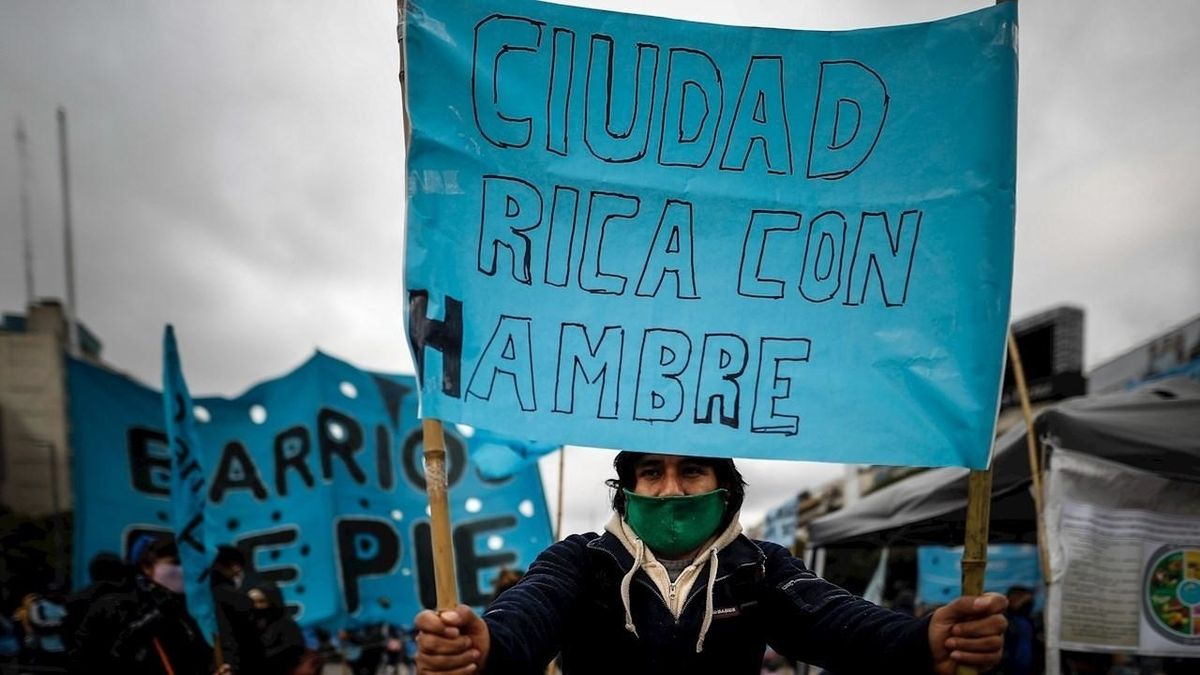The In 2023, Argentina was positioned as the fourth country with the greatest inequality of income in a world ranking only behind South Africa, Brazil, Colombia and Mexicoaccording to the latest economic report of the world Bankmade with the Gini index. Taking into account the regions, the one that presents the worst indicator is the Sub-Saharan Africa and in second place is Latin America and the Caribbean.
Poverty had been falling since the period 2007-2012, but This phenomenon stalled with the coronavirus pandemic, which determined that inequalities increased. The countries in which inequality increased the most were Colombia (54.8%), Brazil (52%), Zambia (51.5%), Panama (48.9%), Costa Rica (47.2%), Ecuador (45.5%), Paraguay (45.1%), Mexico (43.5%), Chili (43%) and in tenth place Argentina (40.7%).
The global development agency attributes the combined threats of climate change; fragility, conflicts and violence, or food insecurity, to name just a few, the difficulties encountered by the full recovery of all economies, as well as the setback in pre-pandemic recovery processes.
Inequality deepened in Argentina
In Argentina inequality deepened. During the first quarter of 2023, the average per capita family income for the total population was $79,007 (the lowest reached $28,356, the middle $70,100 and the highest, $198,245). The value that an adult had on average does not represent 1.5% of the basic basket and is almost 2% less than a year ago in real terms.
In Argentina, the comparative increase in inequality, with respect to other countries in the world, is seen internally in the Evolution of Income Distribution corresponding to the first quarter of this year.
Villa-31-Barrio-Padre-Mugica.jpg
CABA: an extremely unequal city
In one’s own Buenos aires city the income differences of the population are accentuated. While in the North Zone are 93.5% higher than South Zoneaccording to data for the fourth quarter of 2023 prepared by the Directorate of Statistics and Censuses of Buenos Aires.
At the same time, Last year, households in the South had a drop in income in relation to higher inflation to those in the northern zone, while accentuated inequality.
The coronavirus pandemic generated a loss of at least 3 years in the fight for poverty
Around 700 million people around the world currently live in extreme povertywhich means that They earn less than US$2.15 a daya number that decreased by 40% between 2010 and 2019.
Likewise, the trends are similar for people who subsist on less than $3.65 a day and those who live on less than $6.85 a day, according to the report. Those below this last poverty line increased slightly since 2019.
Most nations are concentrated within the Gini scale where Argentina is located, around 40%, and in the lower tens Europeans prevail.
Furthermore, the report highlights that as in most crises, The poorest countries in the world ended up being the most affected. Many of them, who are already in a situation of overindebtedness, they must face even greater resource shortages. There are cases like that of sporadic work online, which is an essential aspect of the labor market and a source of income, but accessed by a minority.
In a context of wars, the report also points out that it also weighs on the negative weighting the current refugee crisis. And it highlights that the immigration policies improved can not only help alleviate the crisis; they can also boost economic growth and the prosperity.
Source: Ambito




